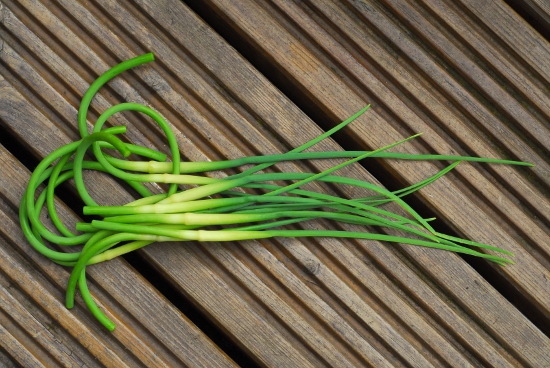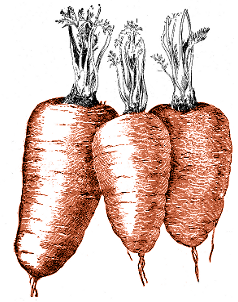Posted in Children, Experimentation, Garden Diary, Planning, Practicalities, The Old Garden In Bristol on Tuesday, March 29th 2016 (9.56 PM).
Spring has come around, and the brambles are slowly being hacked back. At least once a week, if the weather has been dry enough, I have been going outside, gloves on, and cutting my way into them. There aren’t many garden jobs I will wear gloves for, but demolishing brambles is one of them.
This has to be the year I get on top of the garden and get interested in it again, because the children—now aged two and a quarter—have started to take an interest in it themselves, partly because of me going out to hack the brambles down. “Me help garden!” says The Child Who Likes Fairies each time I look as if I’m about to go out there. Her “help” consists mostly of moving mud from place to place, of course; we gave her an old spoon in the hope she wouldn’t use her hands, but of course she does use her hands.
Given that the garden has been abandoned for two and a half years, more or less, not much is salvageable. One thing I have learned about keeping a largely container-based garden is that it does indeed require a lot of maintenance, because you don’t really end up creating a self-seeding ecosystem other than one based around dandelions. The bay bush that stands in an IKEA dustbin is doing just fine; the last potato crop in the other IKEA dustbin seems to have turned perennial, the foliage looking steadily less healthy each year. There is a pot of lavender which looks lively; a pot of rosemary which looks OK; and another rosemary and a purple sage which look as if they might survive, if we apply the defibrillator. Apart from that, there are a lot of pots filled with weeds or bare compost, and a goodly number of wooden containers in varied states of decay.
So, what to do? Back to basics, that’s what. Back to what we did five years ago when we decided we wanted to do something with our garden: go down to the garden centre, buy some plants, and see what we can make with them. The very first pots we bought are still in great condition, probably because they’re not just plain terracotta, so into them the plants go. Let’s see what happens.
There are a couple of tenets we’re trying to stick to this time. Firstly, we have children now, so it’s their garden too. The garden has to be safe for them to play in, have room for them to play in, and they need to be able to get involved in it. Secondly, we have much less time than we used to, so it has to be simple to maintain. We might only have a tiny garden, but we no longer have time to care for it on a square-millimetre basis. The other tenets are the same as always: organic principles as far as possible, things to be ideally productive, in some broad sense, as well as attractive, and the deliberate avoidance of neat rows and unnaturally bare soil. So the plants that have gone into pots today are:
- Lemon thyme, Thymus x citriodorus.
- Purple sage, Salvia officinalis purpurascens. Yes, even though we have one already just hanging on, and we’ve never had much success with sage previously. I am blaming our previous failures on small pots and over-watering.
- Green fennel, Foeniculum vulgare.
- French marjoram, Origanum onites.
- Creeping thyme, Thymus praecox “coccineus”. No, you can’t eat this one.
As The Child Who Likes Fairies has already shown herself highly skilled at moving soil from one place (usually pots) to another (usually the decking), we let her and her brother help repot them all. She quickly picked up the idea of moving compost from bag to pot. The Child Who Likes Animals, on the other hand, preferred to run around the garden as fast as he could, but he definitely seemed to be enjoying it too. Even when the rain started, they didn’t want to stop. “Me like rain,” TCWLF said. Next time, we might even let them plant some seeds.
back from the dead, creeping thyme, fennel, french marjoram, green fennel, herbs, lemon thyme, marjoram, purple sage, sage, summary, thyme
Posted in Garden Diary, Retrospective, The Old Garden In Bristol on Saturday, July 7th 2012 (2.50 PM).
A week ago, we passed the midpoint of the calendar year; a week or two before that, the midpoint of the solar year. A good place, I thought, to put together a little bit of a summary on how things are growing so far. With the weather, of course, it’s not going too well. There are bright spots, though. Here’s a summary, at least of the plants that are worth talking about.
- Potatoes: they’re not quite ready yet. Of the two batches of potatoes I planted, the first seem to be doing quite well. The second, though, are having problems. When I planted them, they were already far too leggy, and they stayed far too leggy as they grew. Because of that, they haven’t coped with the weather at all: they have flopped all over the place. For some reason, floppy potato plants are far more attractive to slugs and snails than tidy, well-behaved ones are.
- Green beans: the first batch were planted far too early, but happily sat in their pot for a month or two until the weather was warm enough. They’ve just reached the top of their poles, buds are starting to come, and the second batch I germinated are now ready to pot on.
- Runner beans: these went in a bit later than the green beans, and are already in full flower. They seem to be a little reluctant to set fruit, though; only one or two tiny embryo beans have been spotted so far. The standard advice for persuading beans to set seems to be “spray the flowers with water”, but given the weather I don’t really think that would help. Most of the salad leaves I planted around the base of the beans completely bolted before the weather turned wet, but some of the lettuce has been harvested and eaten.
- Garlic: also looking a bit windblown, and also not quite ready yet. They have, in the past couple of days, very quickly put forth a scape on each plant: the scapes are now safely in the fridge for eating.

- Peas: if you ever hear anyone say to you “semi-leafless peas are self-supporting when sown in a block”, put your hands over your ears. And tape their mouth shut. And shoot them. This may be true in theory, but in reality I found that the growing peas could not cope at all with the weight of their pods. The first batch has already been harvested; and when I took them down, I could see just how twisted and serpentine the later batches have become. A final extra-big batch has been sown and planted on, spaced slightly further apart and with a lot more support provided by horizontal strings: I suspect the tight planting of the first couple of batches was the cause of the large number of pods with just two or three peas inside.
- Courgettes: the first of these were planted on about a month ago now, and seem to be doing fairly well. The first few flowers have bloomed: the problem is that with only a handful of plants, and the flowers only lasting a few days, it is difficult to get male and female flowers in bloom at the same time.
- Lemon balm: I picked these seeds up at the Bristol Seed Swap at the Cube Cinema back in February. Back in May, I put them in a pot, and waited for them to grow. Nothing happened, and I assumed something had gone wrong: all died, all rotted, all eaten by evil weevils. However, just this morning, I spotted one tiny seedling starting to emerge. Maybe it will turn out to be a lemon balm plant. So there’s a bright spot.
Writing out a list like this makes me aware of just how many different plants there are in the garden at the moment: I haven’t even had space to mention the mint; the basil mint; the peppermint; camomile; chervil; borage; French marigolds; English marigolds; cornflowers; thyme; lemon thyme; sage; rosemary; lavender; sweet peas; flat parsley; curly parsley; the fennel; or the chard. Probably best not to mention the chard at all, in fact, because I’m sure it’s a bad sign when your chard and your beans are the same height. Time to plant some more there, I think.
bean, chard, courgette, garlic, green bean, lemon balm, pea, potato, runner bean, summary, swiss chard


